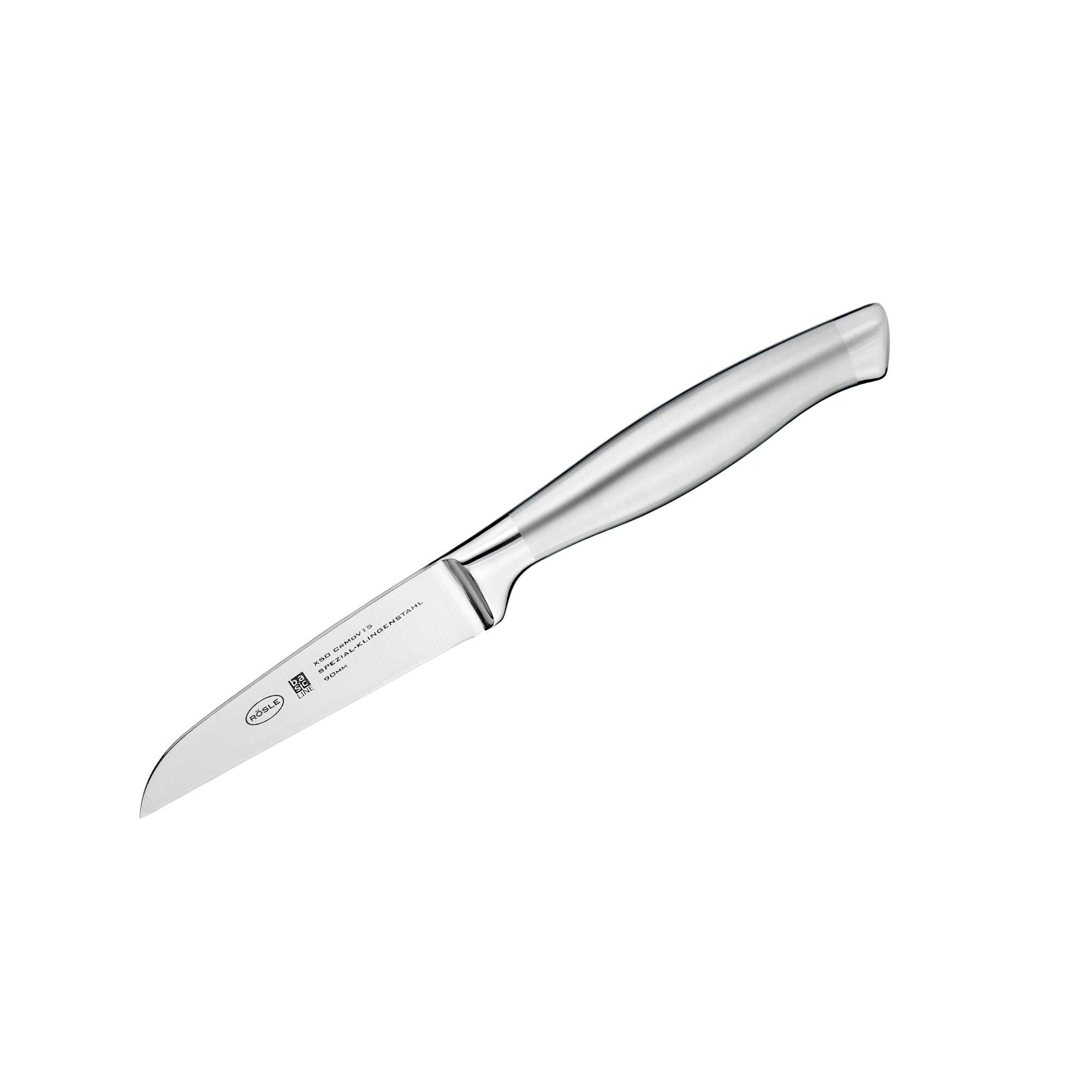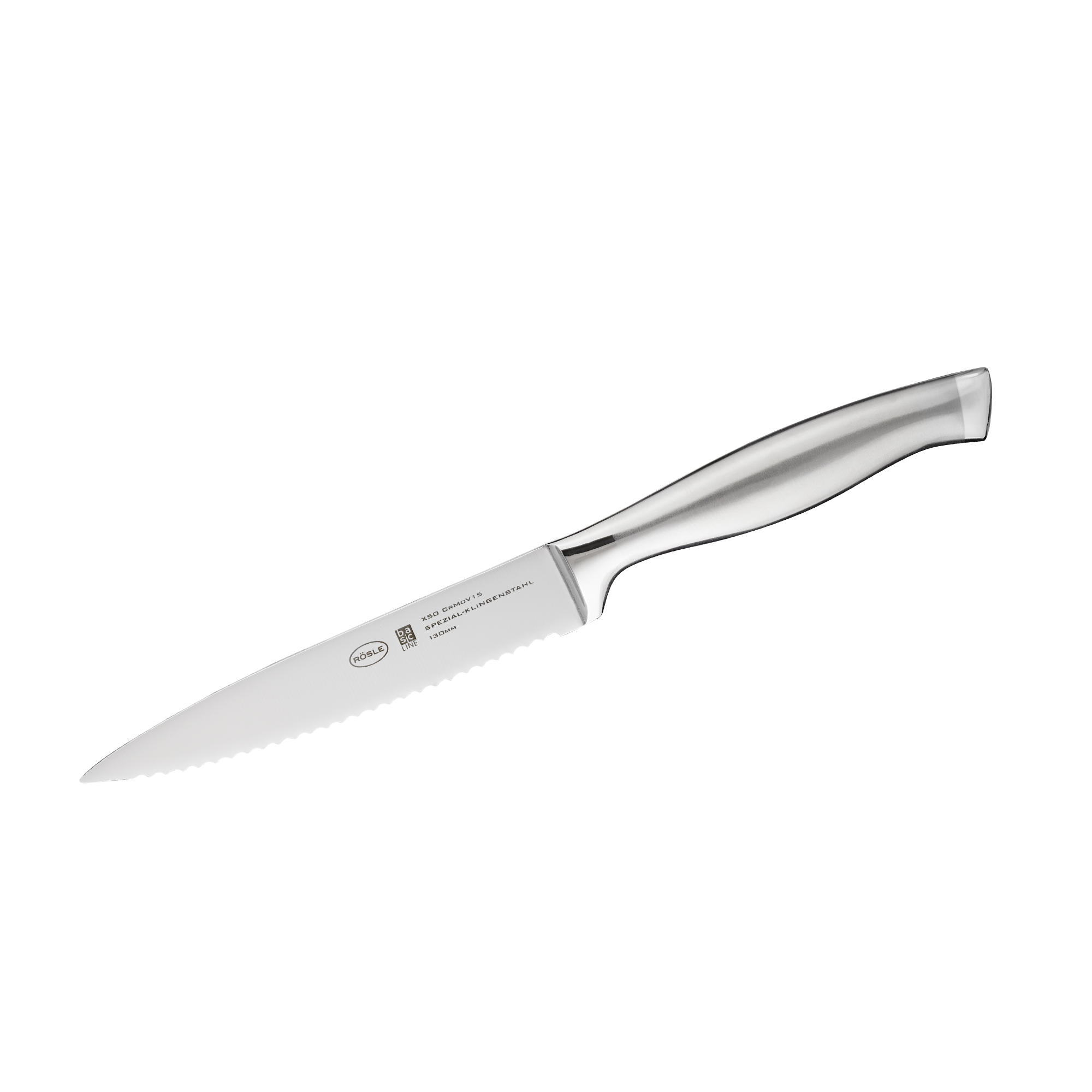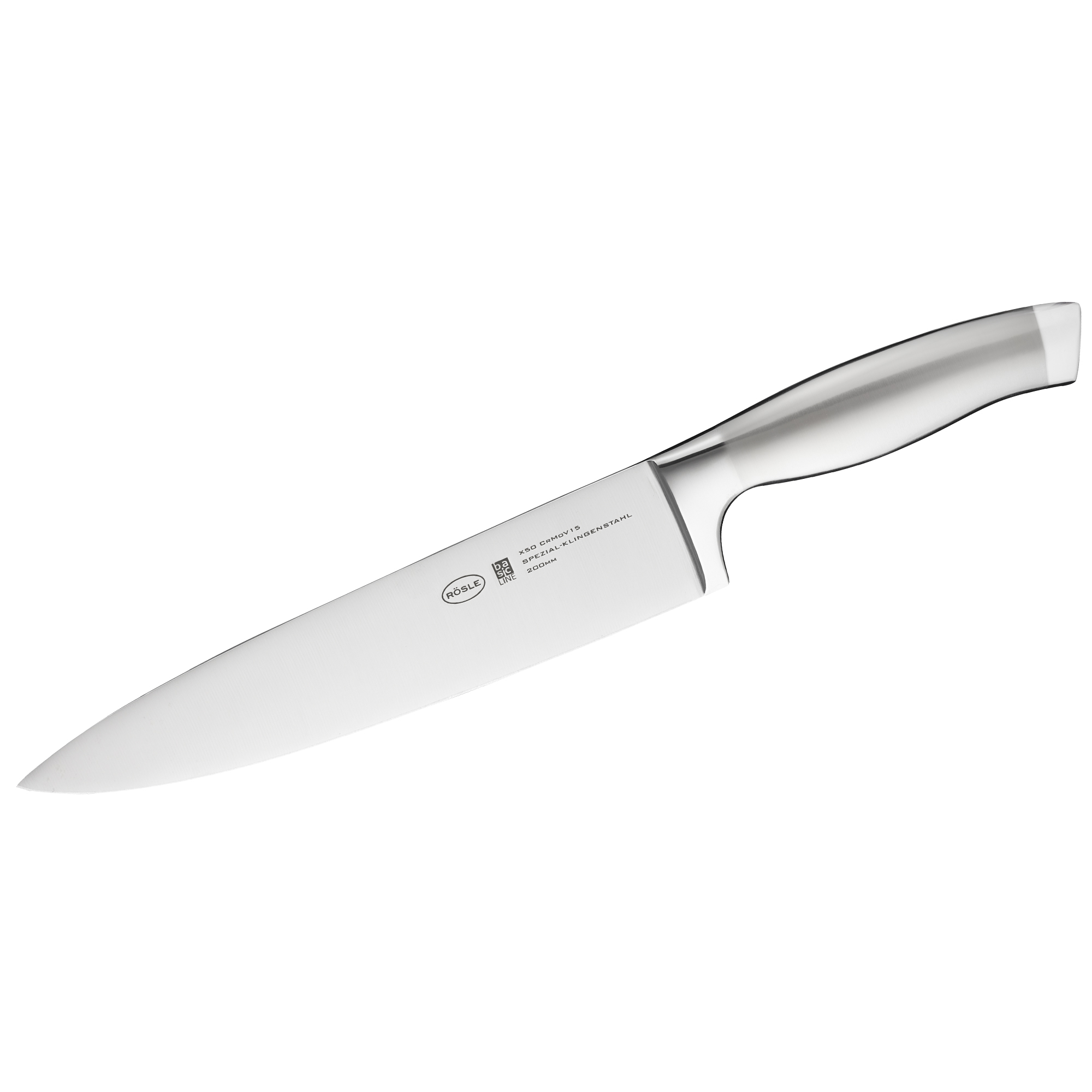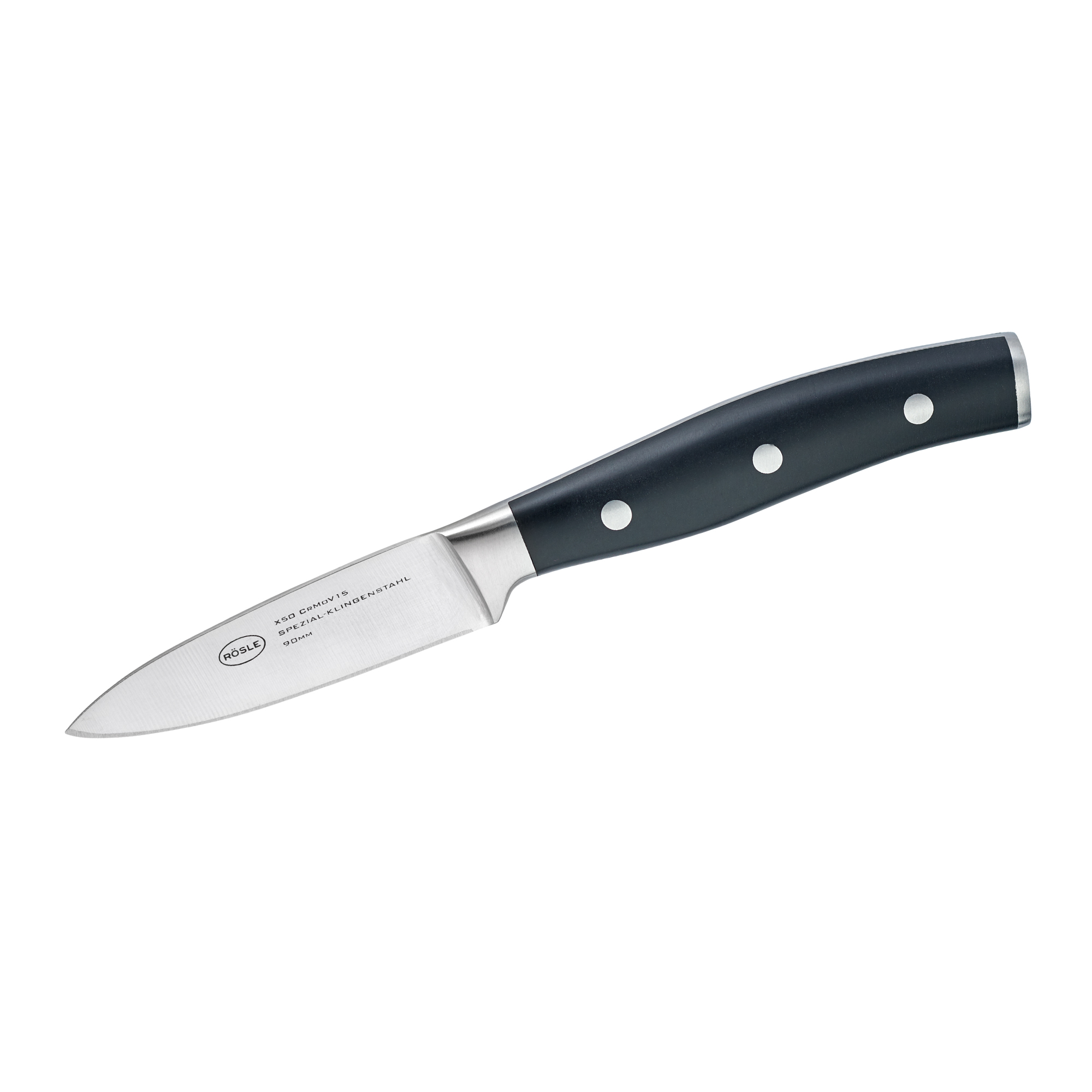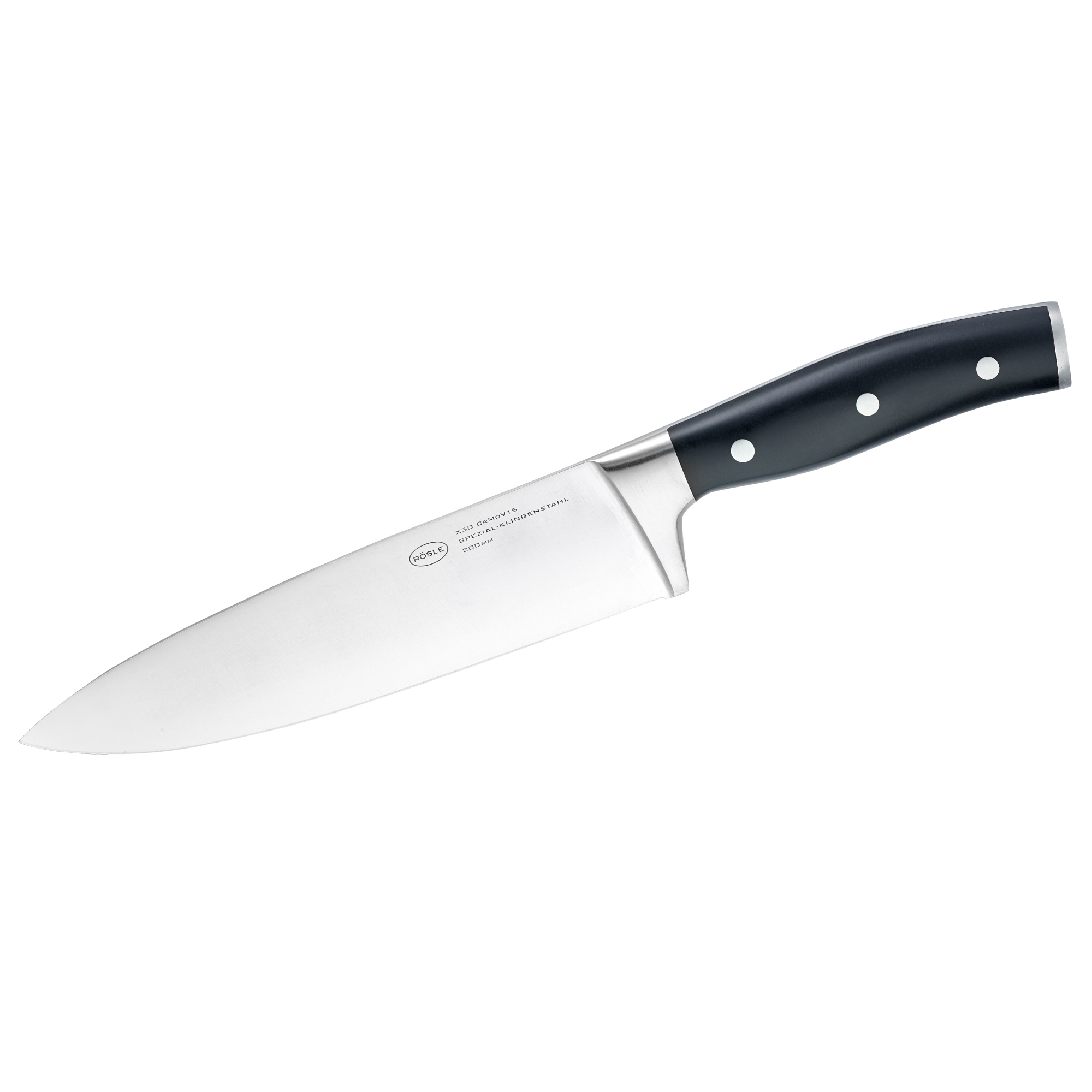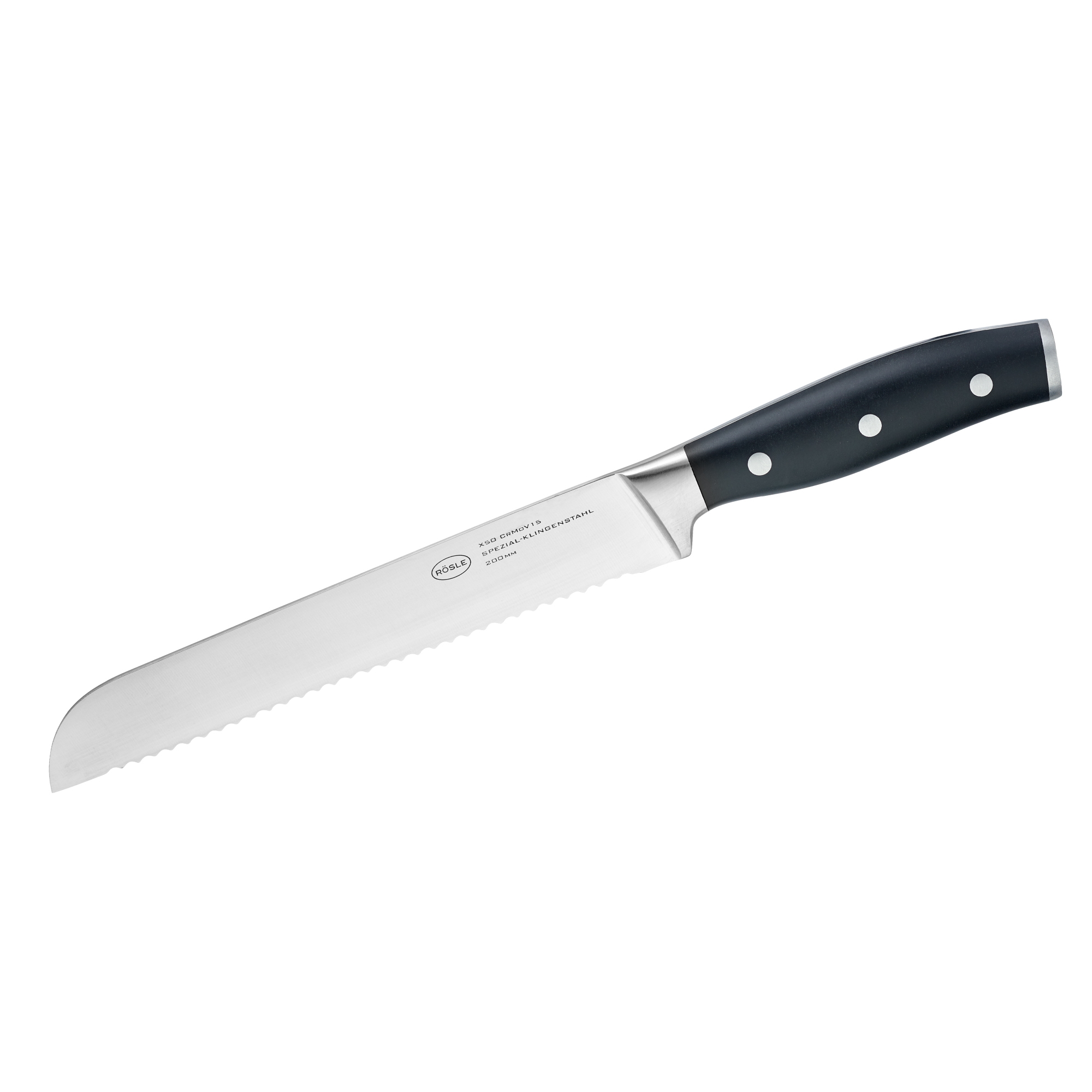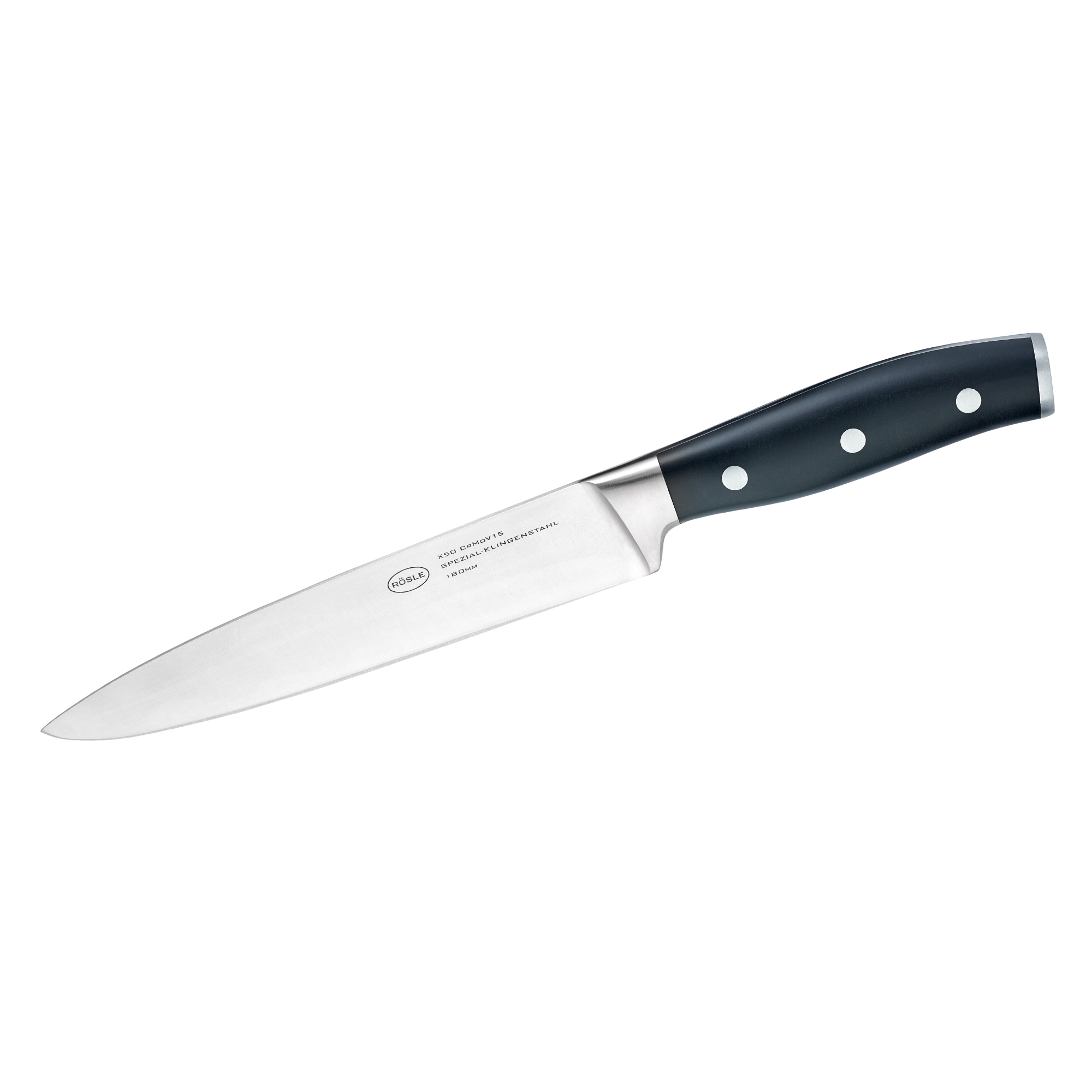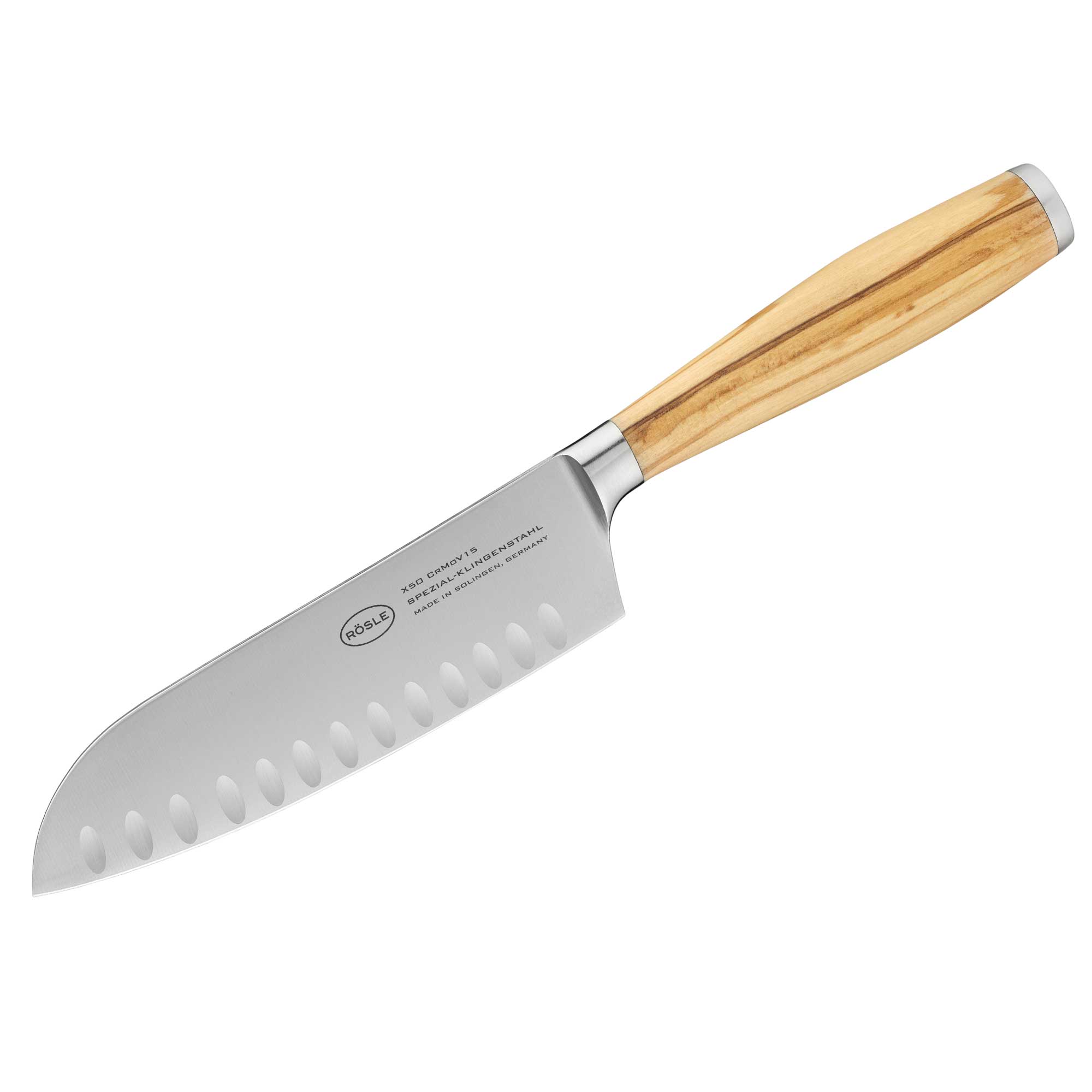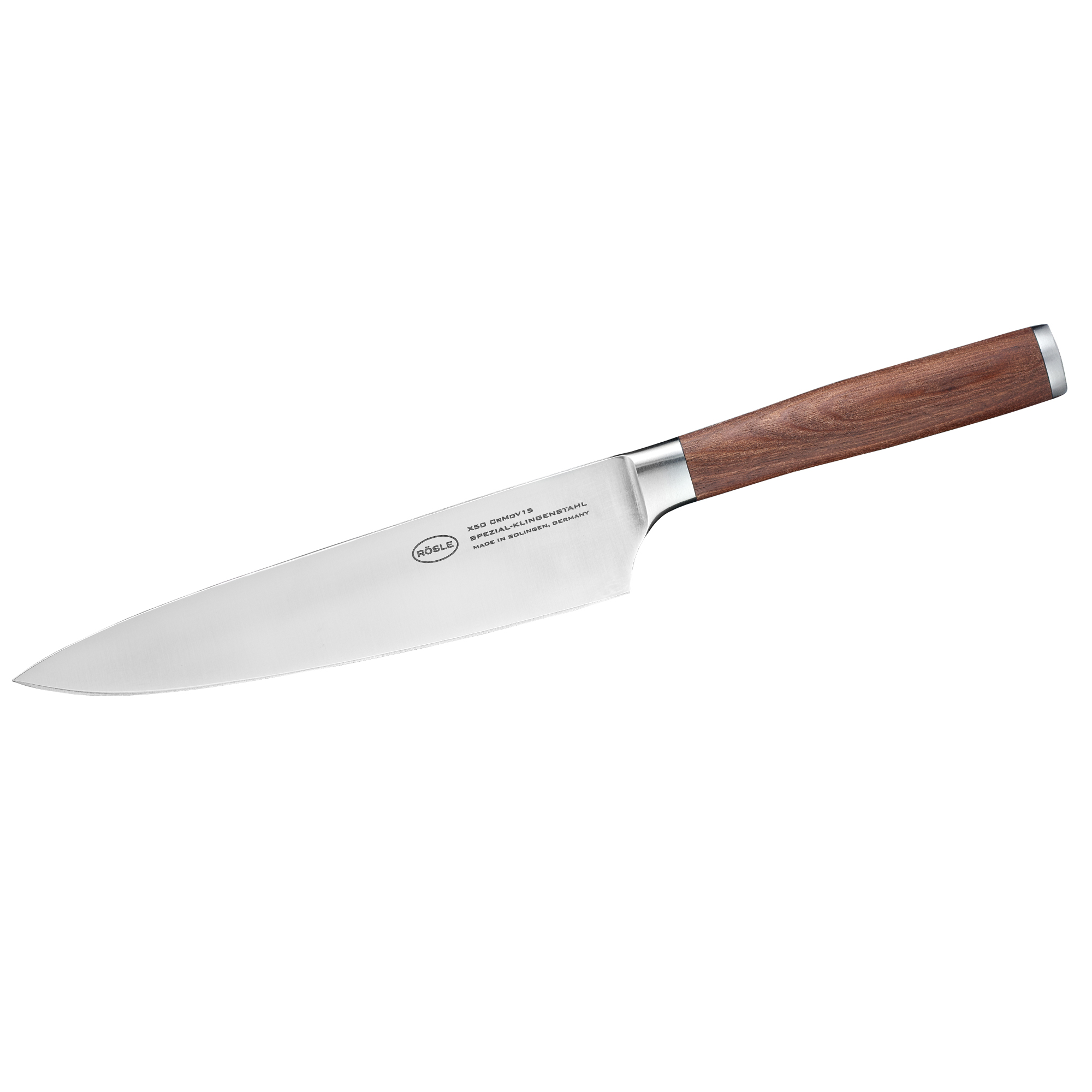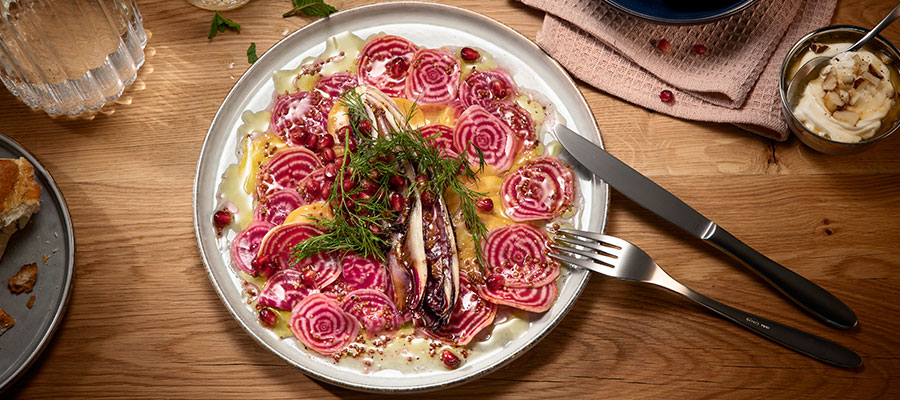Kitchen knives from RÖSLE: more than just sharp
Kitchen knives from RÖSLE: more than just sharp
Kitchen knives can be found in every household. But let's be honest: could you name off the top of your head what characteristics a kitchen knife must have, apart from being nice and sharp? Does a kitchen knife always have to be sharp or does it also depend on what material the blade is made of and whether it is straight, curved or serrated?
And what were the cut-outs on the Santoku knife actually good for again? If you want to plan the purchase of new kitchen knives in the best possible way, you have probably already asked yourself these and other questions. Read on to find out how different types of kitchen knives differ and what quality features characterize kitchen knives from RÖSLE.
The right knife for every purpose: knife types and their use
Kitchen knives are differentiated according to the purpose for which they are best suited. Good basic equipment includes chef's knives, paring knives, carving knives, bread knives and Santoku knives. Larding knives, utility knives and paring knives are useful additions.
A high-quality chef's knife can be used for slicing, weighing or chopping. Its blade length is usually 20 cm. As a utility knife, it has a medium-pointed blade shape with a smooth grind. Premium knives are equipped with a forged or hand-forged blade.
In any case, a clean and high-quality finish is important, and the knife must also be non-slip when pulling and pushing, which makes the choice of handle particularly important. Chef's knives are available with handles made of plastic, wood or stainless steel. All three types of material are suitable for this type of knife.
Carving knives have a narrower blade so that they offer less surface area for sticking when carving or slicing. As with all kitchen knives, the blade should be made of special steel. The smaller larding knives are used for larding meat and vegetables and can be used to cut fine grooves for larding.
Fruit and vegetables are best peeled, cut or cored with a paring knife, as the knives with a blade length of 8 to 9 cm fit well in the hand. For cutting larger vegetables and fruit on the chopping board, however, you should use a chef's knife, a utility knife with a serrated edge or a Santoku knife.
The santoku knife originates from Japanese cuisine and is characterized by a thin, hard blade and often small indentations on the blade. These so-called indentations prevent sticking even when cutting a ham into wafer-thin slices. The wide blade of the Santoku knife also makes it easy to lift and present the sliced product.
Another knife that no kitchen should be without is the bread knife. It is characterized by the finely serrated serrated edge of the long and medium-width blade, which ensures that even a thick crust can be cut through smoothly with the bread knife.
Whether blade, bolster or handle: quality makes all the difference!
The quality of a knife results from the perfect interplay between its intended use, material and design. In general, the blade of a kitchen knife should be made of high-quality, corrosion-resistant steel. The best quality is achieved by using a special stainless steel for knife production (X50CrMoV15). This is an alloy with 0.5 % carbon and a chromium content of around 15 %. Other components are molybdenum, which ensures good strength, and vanadium, which counteracts wear on the knife steel.
The handles of your kitchen knives ideally have a smooth surface, are ergonomically shaped and can be cleaned without the use of harsh detergents. Safe plastics such as polyoxymethylene (POM) or cleanly processed woods such as olive, walnut or pakkawood are suitable.
Between the blade and the handle is the so-called bolster, a thickening that prevents the fingers from slipping and helps to ensure that the knife can be safely guided or applied with pressure. As described above, the grind and blade shape must match the intended use of the knife.
If you find it too tedious to check every single feature of a knife, simply look for the “Made in Solingen” seal on kitchen knives. The “blade city” of Solingen is a true paradise for fans of high-quality knives, which only awards the “Solingen Knife Art” label if precisely defined quality standards are met during production.
In our range you will find hand-forged and finely ground knives from Solingen, which are perfectly balanced, extremely corrosion-resistant and durable thanks to special processes (ice hardening).
First among the best: kitchen knives from RÖSLE
Sharp blades made from special steel, ergonomic handles and features that are precisely tailored to their intended use: Kitchen knives from RÖSLE bring a fine touch to weighing, chopping, carving, peeling and slicing. The kitchen knives belong to different knife series, each of which fulfills binding quality standards and meets the individual requirements of our customers.
For example, our chef's knives are all available with a blade made of special steel (X50CrMOV15) in a length of 20 cm, but differ in detail. Lovers of Mediterranean cuisine like to opt for the hand-forged chef's knife from the ARTESANO series, which is made using the Solingen knife-making technique and has a warm and smooth olive wood handle with antibacterial properties.
Our chef's knives from the TRADITION series combine a wide, medium-pointed blade with a rounded edge, making the kitchen knives versatile yet precise. The TRADITION handle has a classic rivet look and is made from supple POM polyoxymethylene, while the pronounced bolster ensures perfect hand protection.
Beginners will enjoy our BASIC Line chef's knife, whose fine stainless steel handle is easy to pull or apply with light pressure. For professionals, the MASTERCLASS series offers special highlights “Made in Solingen”. The beautifully shaped wooden handle (walnut) rounds off the stylish design of the master class.
All RÖSLE kitchen knife ranges include paring knives with a blade length of 9 cm, which are ideal for peeling, slicing and coring fruit and vegetables. Some series also include
- Paring knives with a slightly curved blade
- Carving knives with a narrow blade for easy carving
- Larding knives
- Bread knives with serrated edge. A special highlight is the hand-forged bread knife from the ARTESANO series with a blade length of 22 cm and a serrated edge on both sides. Fresh bread with a crispy crust can be cut into fine slices just as easily as an aromatic crusty roast.
- Santoku knives with a classic blade length of 16.5 cm and a particularly fine serrated edge or with an extended blade or without serrations.
High-quality kitchen knives should always be cleaned by hand. For safe and blade-friendly storage, we recommend ordering a knife block from our range at the same time. And to ensure that your kitchen knives retain their sharpness even with daily use, you can also find three-stage knife sharpeners online with which all smooth blades can be effortlessly resharpened.


